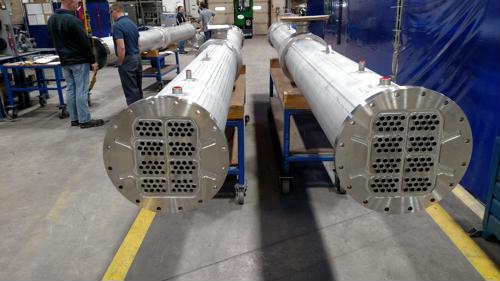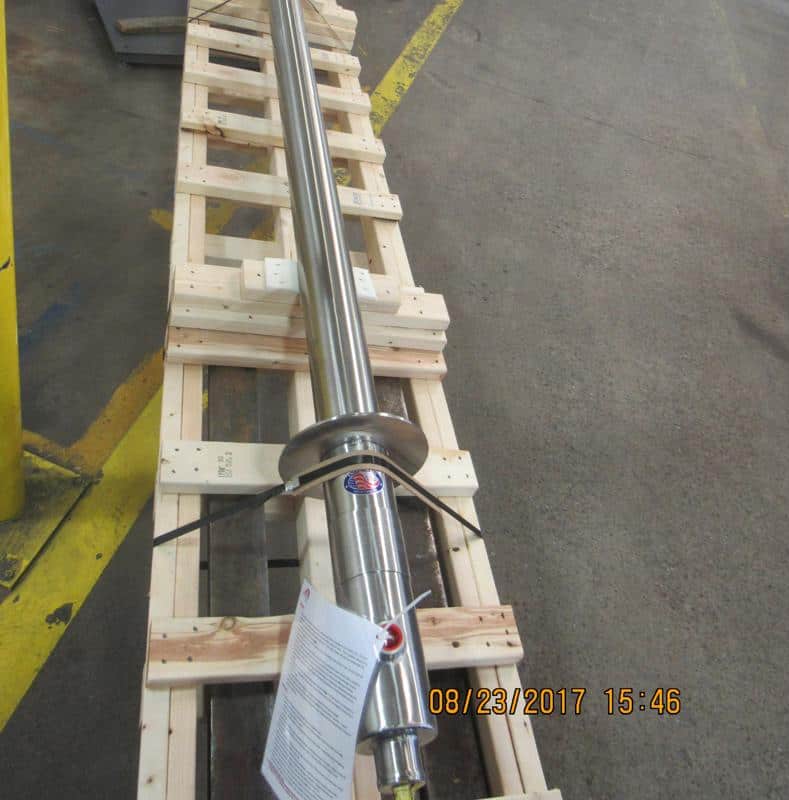One of the most critical factors in the efficiency and effectiveness of a shell and tube heat exchanger is flow pattern. Flow pattern refers to the direction that the tubeside fluid runs in relation to the shellside fluid. There are several distinct patterns engineers can choose from:
- Parallel flow.
- Counter flow.
- Cross flow.
But while each is unique and has its own pros and cons, there are many times when a combination of multiple flow patterns is beneficial, or even necessary. Here’s what you need to know about these three flow patterns for shell and tube heat exchangers:
A parallel flow pattern, also referred to as a cocurrent flow, is one in which the shellside and tubeside fluids flow in the same direction. This is widely seen in double-pipe heat exchangers and can be replicated in shell and tube heat exchangers as well, according to Bright Hub Engineering.
“The dramatic temperature difference at the inlet can cause thermal stress in parallel flow heat exchangers.”
The inlet temperatures of the two fluids may be significantly different, but by the conclusion of the process they’re relatively the same temperature. With parallel flow, the wall temperatures throughout the exchanger will be more uniform than with other flow patterns, Thermopedia noted. When the goal is to wind up with two fluids that have a relatively insignificant temperature gap, a parallel flow shell and tube heat exchanger may be the ideal solution, Engineers Edge explained. When there is a notable temperature gap, the cold-fluid temperature will always be colder than the hot-fluid temperature, Marine Notes pointed out.
It’s important to note that because the heat exchange rate isn’t as high as other flow patterns, parallel flow heat exchangers need greater heat transfer surface area. As such, it’s critical that facility executives ensure they have the available floor space for their parallel flow shell and tube heat exchangers, as they may be larger than another exchanger with a different flow rate.
Additionally, the dramatic temperature difference at the inlet can cause thermal stress, which may result in vibrations that lead to equipment damage.
Counter flow shell and tube heat exchangers
A counter flow or countercurrent shell and tube heat exchanger’s construction is in many ways identical to that of a parallel flow shell and tube heat exchanger. The main difference is that the tubeside fluid enters the exchanger at the opposite end of the shellside fluid. This results in the two fluids running against each other rather than in the same direction.
“The counter flow pattern in shell and tube heat exchangers is the most efficient.”
The counter flow pattern is the most common in shell and tube heat exchangers, primarily because it’s the most efficient. This flow pattern allows for the greatest temperature change between fluids. Additionally, unlike in parallel flow exchangers, the cold-fluid can reach the hottest temperature of the hot-fluid since it exits at the end where the hot-fluid enters.
The temperature difference in counter flow configurations is more uniform throughout the entire exchanger, which reduces thermal stress that can lead to shaking or motions that can become damaging to the equipment. Further, since the temperature difference is more consistent, the heat exchange rate is also more consistent throughout the exchanger.
It’s easiest to achieve “true” counter flow, in which both fluids travel perfectly parallel to one another in opposite directions, in double-pipe heat exchangers, although shell and tube heat exchangers can get remarkably close. The baffles typically included in construction causes the shellside fluid to travel up and down within the shell as well as from the front to back (or vice versa), which lends to a somewhat cross flow pattern. The bigger the length-to-diameter ratio of the exchanger, the closer to “true” counter flow the exchanger will experience, Bright Hub Engineering pointed out.
Crossflow shell and tube heat exchangers
A crossflow heat exchanger is designed so that the two fluids flow perpendicular to one another. This is typically utilized when one fluid is a liquid and the other is a gas, as in a car radiator in which hot water flowing left and right is cooled by air moving up or down, Bright Hub Engineering explained. Crossflow exchangers are also common in steam condensers, in which a liquid transforms into a gas by the end of the process.
Combining flow patterns in shell and tube heat exchangers
In practice, shell and tube heat exchangers are highly complex pieces of equipment, which are integrated into complicated processes. As such, many heat exchangers utilize a combination of multiple flow patterns to accommodate limits related to:
- Available space for the equipment.
- Budget.
- Fluid types to be used.
- Pressure.
- Temperature.
- Weight of the equipment.
A common combination is counter flow and cross flow, as seen in many multipass shell and tube heat exchangers. As the tubeside fluid flows back and forth between the two bonnets, the shellside fluid runs up and down, guided by baffles installed at regular intervals throughout the equipment. One advantage of this is maximizing the heat transfer rate while also minimizing the floorspace taken up by the exchanger.
When you’re looking to either add or replace a shell and tube heat exchanger in your operation, it’s important to understand the significance of different flow patterns. The engineers at Enerquip are experts at determining the most beneficial flow pattern for various processes. Reach out to them to get advice, discuss a project or request a quote.


